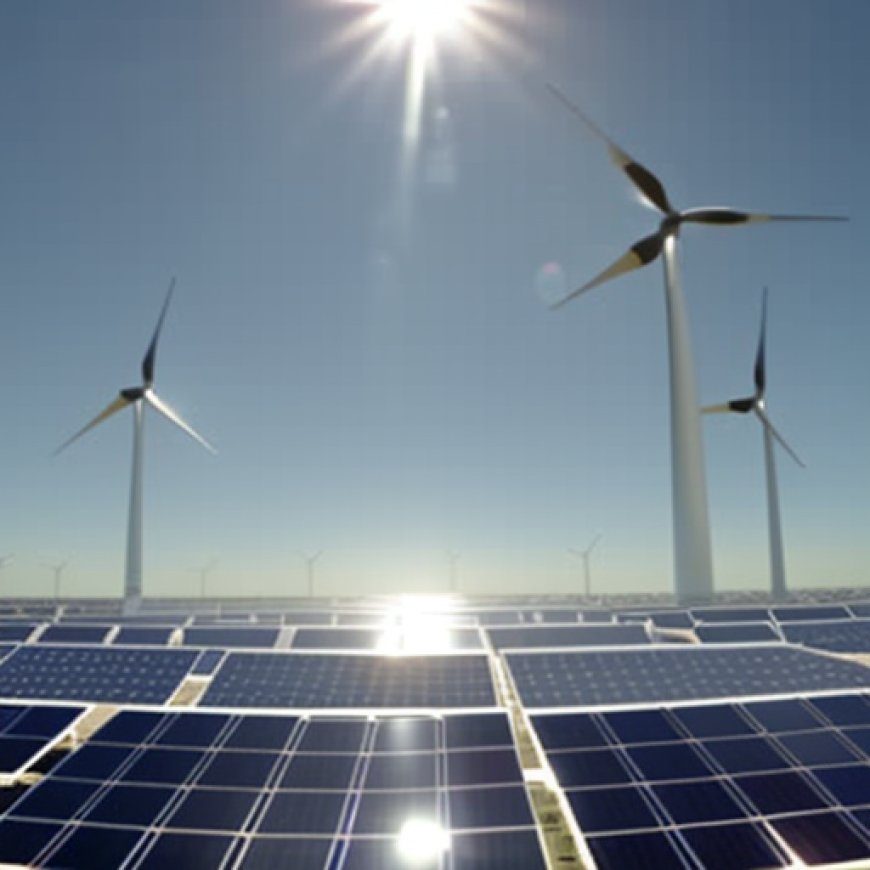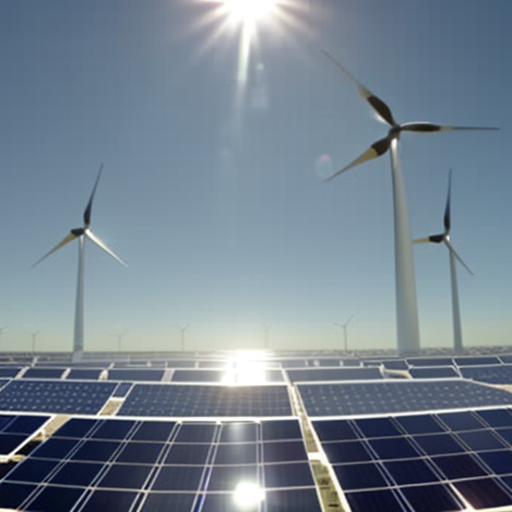Concentrated Solar Power, photovoltaic wind energy production in European electricity markets
Concentrated Solar Power, photovoltaic wind energy production in ... REVE


The Impact of Falling Gas Prices on European Electricity Markets and Record-breaking Solar Energy Production in Spain
The second week of July saw a significant decrease in gas prices, leading to a corresponding drop in European electricity market prices. This trend was further supported by lower electricity demand in most markets, increased wind energy production in some cases, and stable CO2 prices. Notably, Mainland Spain broke the record for photovoltaic energy production on July 14, reaching 159 GWh.
Solar Photovoltaic and Thermoelectric Energy Production and Wind Energy Production
In the week of July 10, the Spanish market witnessed a new daily record for solar photovoltaic energy production, with 159 GWh generated on July 14.
Comparing solar energy production, which includes photovoltaic and solar thermoelectric energy in Mainland Spain, there was a 1.4% increase in the Spanish market and a 1.2% increase in the Portuguese market during the second week of July compared to the previous week. However, other markets experienced a decrease in production with this technology, with the French market having the smallest decrease at 4.5%. The Italian and German markets saw decreases of 5.5% and 6.7%, respectively.
When analyzing solar photovoltaic energy production in the first half of July compared to the same period since 2015, all analyzed markets registered new records. Portugal and Mainland Spain had production increases of 48% and 35%, respectively, compared to July 1-15, 2022. Germany experienced a 12% increase, while Italy and France had the smallest increases at 6.9% and 2.3%, respectively.
AleaSoft Energy Forecasting’s solar energy production forecasting for the week of July 17 indicates an increase in production across all analyzed markets.
- Solar photovoltaic and thermosolar energy production in Europe
- Solar photovoltaic production profile in Europe
Source: Prepared by AleaSoft Energy Forecasting using data from ENTSO-E, RTE, REN, REE, and TERNA.
Wind Energy Production
In the second week of July, wind energy production increased in most analyzed markets compared to the previous week. The Spanish market saw the largest increase at 29%, followed by an 18% increase in the French market and a 12% increase in the Portuguese market.
However, the German and Italian markets experienced a decrease in wind energy production during the week of July 10. The German market had the largest decrease at 12%, followed by a 4.2% decrease in the Italian market.
In terms of wind energy production between July 1 and 15 since 2011, the highest production with this technology was registered in the first half of July 2023 in the French and German markets.
AleaSoft Energy Forecasting’s wind energy production forecasting for the third week of July indicates increases in the Italian and Spanish markets, while decreases are expected in the markets of France, Portugal, and Germany.
Source: Prepared by AleaSoft Energy Forecasting using data from ENTSO-E, RTE, REN, REE, and TERNA.
Electricity Demand
During the week of July 10, electricity demand decreased in most analyzed European markets compared to the previous week. The largest decrease of 4.9% was observed in the Belgian market. The French, British, Portuguese, and Dutch markets experienced decreases ranging from 0.1% to 0.9%. The drop in demand in France was attributed to the French National Day holiday on July 14.
However, some markets saw an increase in demand. The Italian market had the highest rise at 9.8%, followed by a 5.9% increase in the Spanish market and a 1.2% increase in the German market.
In Great Britain, the decrease in demand coincided with a drop in average temperatures of 0.2°C. In other analyzed markets, average temperatures increased compared to the previous week, ranging from 0.7°C in Belgium to 2.5°C in Italy.
AleaSoft Energy Forecasting’s demand forecasts for the third week of July indicate a drop in demand in most analyzed European markets, except for Portugal, Italy, and France.
Source: Prepared by AleaSoft Energy Forecasting using data from ENTSO-E, RTE, REN, REE, TERNA, National Grid, and ELIA.
European Electricity Markets
In the week of July 10, prices in the main European electricity markets analyzed by AleaSoft Energy Forecasting decreased compared to the previous week. The Nordic countries’ Nord Pool market saw the largest price fall at 24%, while the IPEX market in Italy experienced a slight decrease of 2.2%. Prices in other markets fell between 6.8% in the EPEX SPOT market of Germany and 21% in the N2EX market of the United Kingdom.
During the second week of July, the weekly averages in most European electricity markets were below €80/MWh. The exceptions were the Italian market with the highest average price of €113.98/MWh, and the MIBEL market of Spain and Portugal with averages of €89.89/MWh and €90.82/MWh, respectively. The Nordic market had the lowest weekly average at €39.20/MWh. Prices in other analyzed markets ranged from €71.81/MWh in the Dutch market to €78.57/MWh in the German market.
Negative prices were recorded in the Belgian and Dutch markets on Wednesday, July 12, as well as on Monday, July 17. Negative hourly prices were also observed in the German,
SDGs, Targets, and Indicators Analysis
1. Which SDGs are addressed or connected to the issues highlighted in the article?
- SDG 7: Affordable and Clean Energy
- SDG 13: Climate Action
- SDG 9: Industry, Innovation, and Infrastructure
2. What specific targets under those SDGs can be identified based on the article’s content?
- SDG 7.2: Increase substantially the share of renewable energy in the global energy mix.
- SDG 7.3: Double the global rate of improvement in energy efficiency.
- SDG 13.2: Integrate climate change measures into national policies, strategies, and planning.
- SDG 9.4: Upgrade infrastructure and retrofit industries to make them sustainable.
3. Are there any indicators mentioned or implied in the article that can be used to measure progress towards the identified targets?
- Renewable energy production (solar photovoltaic and thermoelectric energy production, wind energy production)
- Electricity demand
- Electricity market prices
- Gas prices
- CO2 prices
- Average temperatures
Table: SDGs, Targets, and Indicators
| SDGs | Targets | Indicators |
|---|---|---|
| SDG 7: Affordable and Clean Energy | 7.2: Increase substantially the share of renewable energy in the global energy mix. | – Solar photovoltaic and thermoelectric energy production – Wind energy production |
| SDG 13: Climate Action | 13.2: Integrate climate change measures into national policies, strategies, and planning. | – CO2 prices |
| 13.2: Integrate climate change measures into national policies, strategies, and planning. | – Renewable energy production – Electricity market prices – Gas prices – Average temperatures |
|
| SDG 9: Industry, Innovation, and Infrastructure | 9.4: Upgrade infrastructure and retrofit industries to make them sustainable. | – Renewable energy production – Electricity market prices |
Behold! This splendid article springs forth from the wellspring of knowledge, shaped by a wondrous proprietary AI technology that delved into a vast ocean of data, illuminating the path towards the Sustainable Development Goals. Remember that all rights are reserved by SDG Investors LLC, empowering us to champion progress together.
Source: evwind.es

Join us, as fellow seekers of change, on a transformative journey at https://sdgtalks.ai/welcome, where you can become a member and actively contribute to shaping a brighter future.







